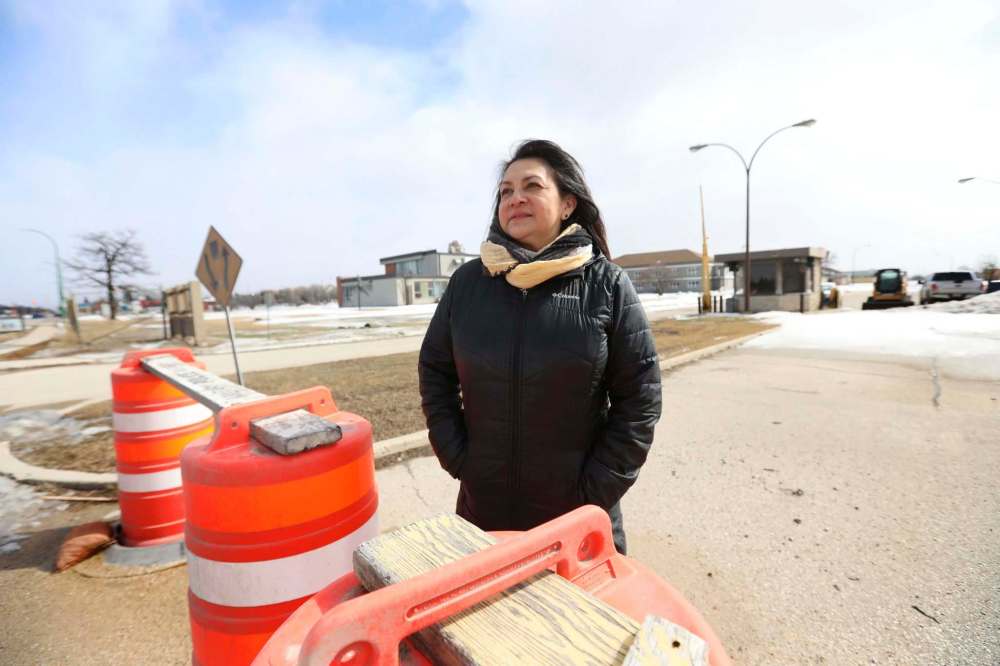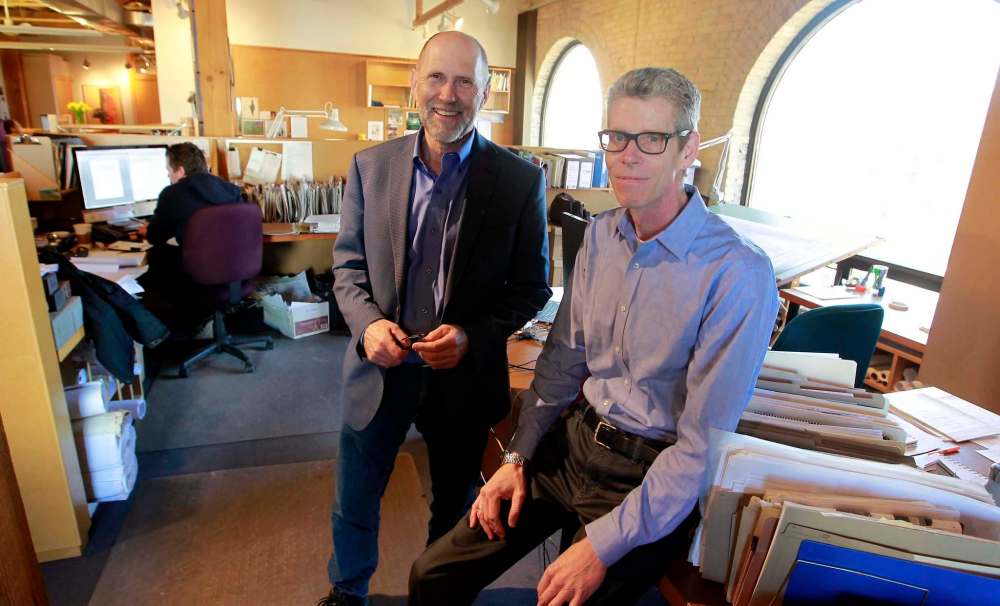A chance for reconciliation
Despite delay and decay, hope remains for a thriving development at Kapyong Barracks
Advertisement
Read this article for free:
or
Already have an account? Log in here »
To continue reading, please subscribe:
Monthly Digital Subscription
$0 for the first 4 weeks*
- Enjoy unlimited reading on winnipegfreepress.com
- Read the E-Edition, our digital replica newspaper
- Access News Break, our award-winning app
- Play interactive puzzles
*No charge for 4 weeks then price increases to the regular rate of $19.00 plus GST every four weeks. Offer available to new and qualified returning subscribers only. Cancel any time.
Monthly Digital Subscription
$4.75/week*
- Enjoy unlimited reading on winnipegfreepress.com
- Read the E-Edition, our digital replica newspaper
- Access News Break, our award-winning app
- Play interactive puzzles
*Billed as $19 plus GST every four weeks. Cancel any time.
To continue reading, please subscribe:
Add Free Press access to your Brandon Sun subscription for only an additional
$1 for the first 4 weeks*
*Your next subscription payment will increase by $1.00 and you will be charged $16.99 plus GST for four weeks. After four weeks, your payment will increase to $23.99 plus GST every four weeks.
Read unlimited articles for free today:
or
Already have an account? Log in here »
Hey there, time traveller!
This article was published 29/03/2018 (2814 days ago), so information in it may no longer be current.
Though the project has been marred by court challenges and broken treaty promises for more than a decade, the future of Kapyong Barracks is still hopeful and it could become a tangible example of reconciliation in the heart of the country, says Manitoba’s treaty relations commissioner.
“I think that if something good can come out of this, if the government can support (the First Nations) rather than just being forced to do this by the courts, I think it’s an opportunity for them to move it further to say, ‘OK, let’s do this and let’s support the First Nations in their economic development. Let’s support the First Nations in having (Kapyong) converted to reserve,’” said commissioner Loretta Ross, a member of Hollow River First Nation who works with the Treaty Relations Commission of Manitoba.
Ross said Canada should consider fast-tracking conversion of the barracks into an urban reserve, if or when the land purchase goes through, to make up for past stalling and to mend Treaty One relationships.

Seven First Nations — Brokenhead, Long Plain, Peguis, Roseau River, Sagkeeng, Sandy Bay and Swan River — are interested in the Kapyong property. It has been vacant since 2004 when Princess Patricia’s Canadian Light Infantry moved to CFB Shilo.
The Federal Court of Appeal echoed hopes for reconciliation in its final court decision in August 2015, which ruled the First Nations ought to have first dibs on the surplus land. Canada had previously tried to sell the property to Canada Lands Co. in 2007 without properly consulting the Indigenous groups, the court said.
“Finally, it is to be hoped that whatever rancour, bitterness and mistrust among the parties may have existed in the past, the parties will now proceed to engage in constructive, respectful consultations concerning the Barracks property for the benefit of all,” the court wrote in its decision.
Ross believes the public is warming to the idea of an urban reserve located in the south end of Winnipeg. She sees it as an excellent economic opportunity that could also further social and cultural understanding between Indigenous and non-Indigenous people.
Still, there is “absolutely” some racism apparent among detractors of the urban reserve concept, she said.
“I think a large part of it is fear of the unknown. Urban reserves are still a relatively new concept in Manitoba, despite the fact that we’ve had urban reserves in many major cities across Canada. We’re a little bit behind here in understanding and grasping that concept,” Ross said.
“So I think Kapyong Barracks will elevate that conversation and hopefully force people to understand it and to accept it.”
Winnipeg does already have an urban reserve near Polo Park. The Madison reserve, which belongs to Long Plain, blends fairly seamlessly with the rest of the cityscape. It boasts a gas station, Yellowquil College and some local businesses.
Local architect Brent Bellamy doesn’t think installing an urban reserve at Kapyong is the only way the barracks could economically benefit First Nations.
Bellamy said Canada Lands could draft up agreements that compel future developers to use First Nations labour and companies, or set up a training centre with strict requirements that the redevelopment project ends up training a prescribed number of Indigenous electricians, construction workers or planners.
“First Nations people in Winnipeg are the key to our future. We have to do something about their situation right now. And it would be great if this piece of land could somehow contribute to that — but it doesn’t have to be an urban reserve to achieve that,” he said.
Jim Thomas and Tim Hogan, planners with HTFC Planning and Design in Winnipeg, are on the outside looking in, wondering what’s going on with the prolonged negotiations. Both men have worked with Indigenous groups for decades on community planning and Treaty Land Entitlement issues.
They say there’s still a long road ahead for Kapyong’s redevelopment — from questions of demolition of derelict buildings and environmental remediation, to municipal service agreements that would need to be drawn up with the City of Winnipeg for things like water, street and sewer networks.
The 160-acre stretch is in a prime location for mixed-use commercial and residential development, said Hogan. Using the land around Tuxedo and River Heights — and not letting it sit abandoned for another 14 years — would be beneficial to all parties, Thomas added.
“What I’d like to think, if I’m feeling positive, is I think Kapyong represents an opportunity … to demonstrate what the intent and the spirit of the treaty was. The nations that existed at the time and the newcomers sharing the land, living together and (having) greater prosperity and quality of life,” Thomas said.
“You sit there and say, ‘Well, that sounds pie in the sky.’ But wouldn’t that be marvellous if there were ways in which you could tangibly show implementation of the promises of the treaty?”

Niigaan Sinclair, who is Anishinaabe and originally from St. Peter’s (Little Peguis) Indian Settlement, said the development of the Kapyong site represents “a true opportunity for reconciliation in Winnipeg, Manitoba and Canada.” At Kapyong, some Indigenous people can finally get back some of the territory they are owed, he said.
“This is a situation where most of these First Nations will be able to find gateways out of the Indian Act just due to this project. It’s an opportunity for Indigenous nations to have a real venue to be able to create relationships and partnerships with Winnipeggers and Manitobans,” said Sinclair, an associate professor in native studies at the University of Manitoba.
“It’s one of those projects where you just see so much potential in it and Indigenous peoples see a real opportunity and a gateway out of the draconian 150 years (of Canada) due to it. It’s not going to be the only solution, but it’s a really big significant solution.”
Kapyong’s future could be more than just a chapter in Canada’s soon-to-be history books, according to Ross.
“I think anytime you have an opportunity for the First Nation community and non-First Nation community to co-exist is a form of reconciliation,” she said. “But (we have) to do it in a respectful manner and in a way that is not so prescriptive to the First Nations that it becomes un-doable or unmanageable in the way that they want to do things as well.”
— with files from Dylan Robertson
jessica.botelho@freepress.mb.ca
Twitter: @_jessbu









